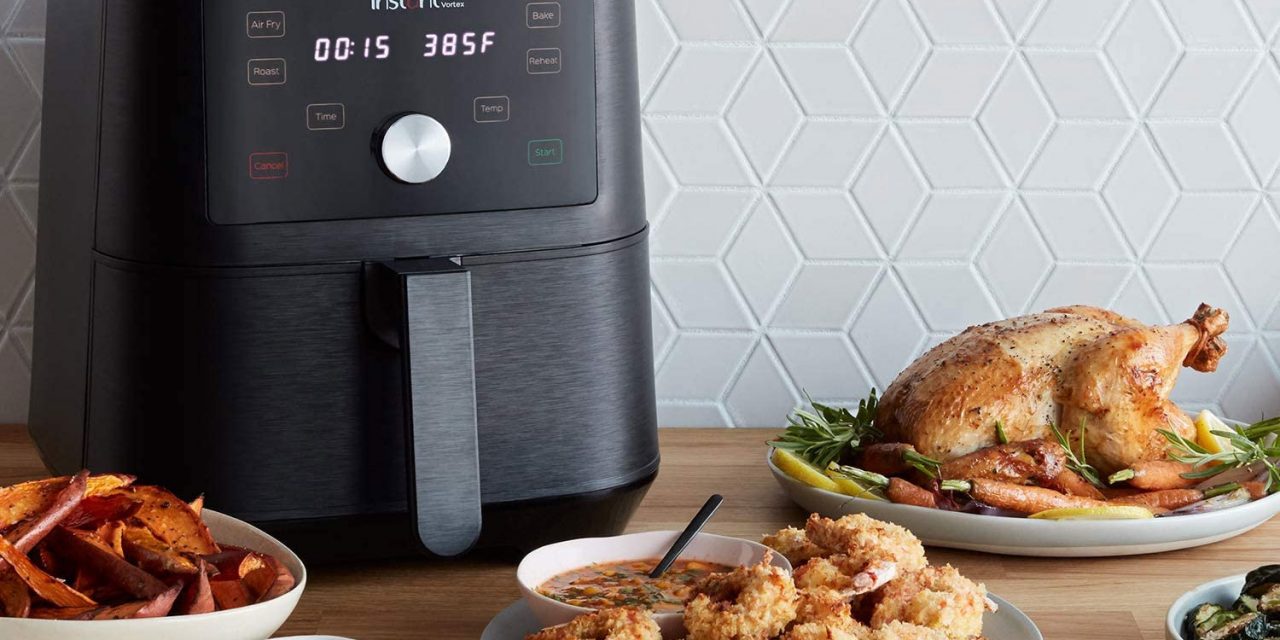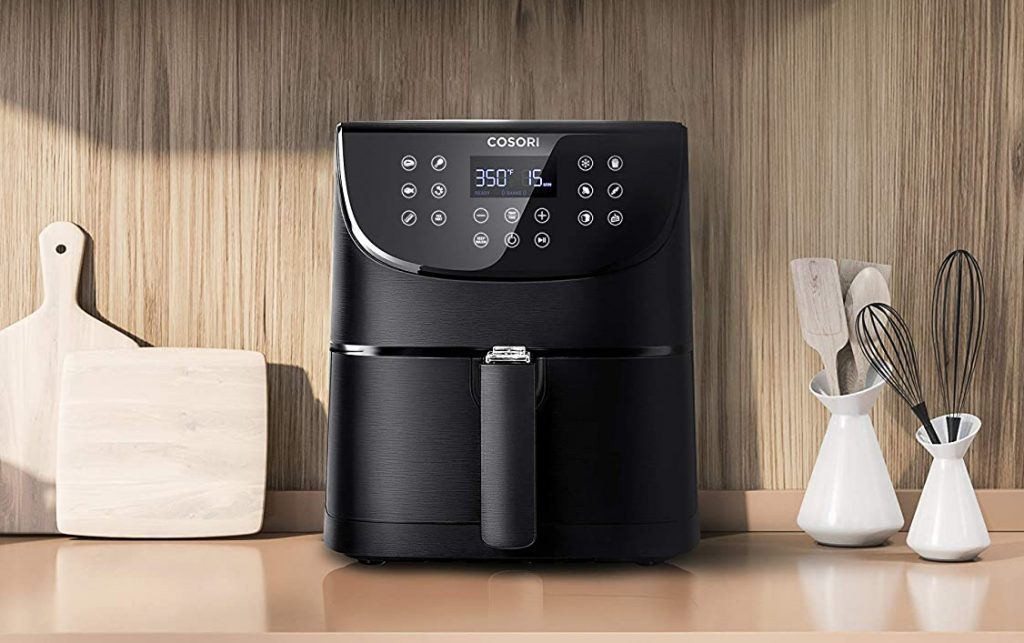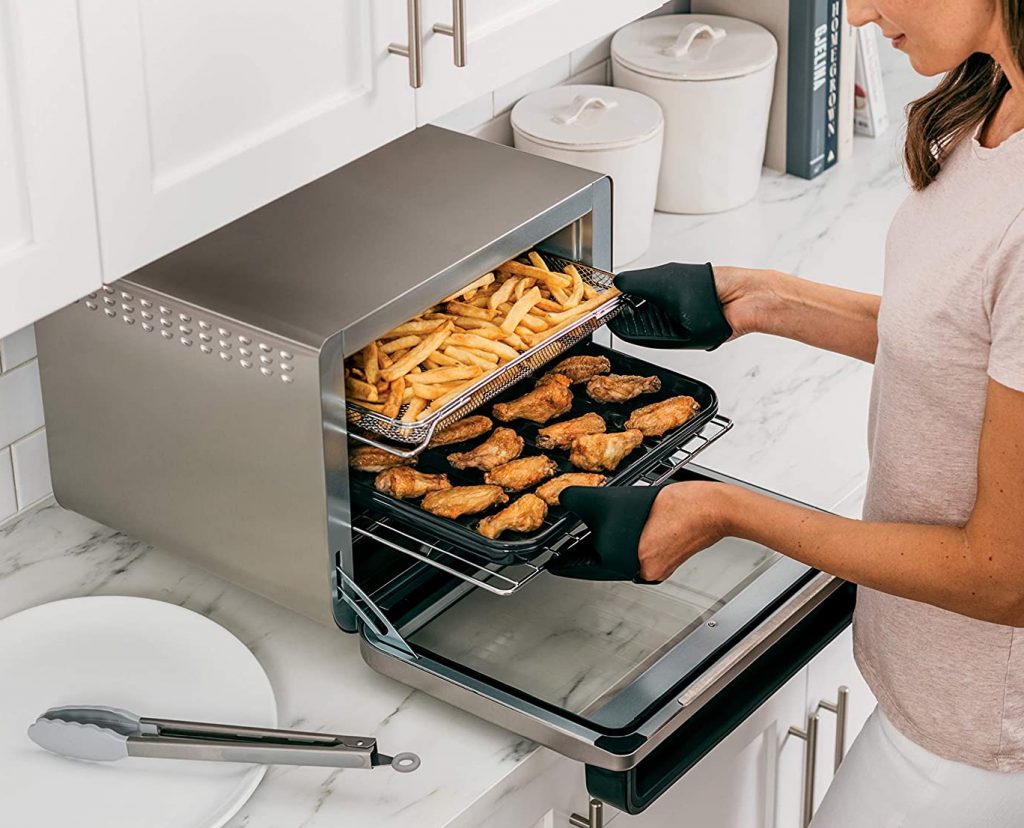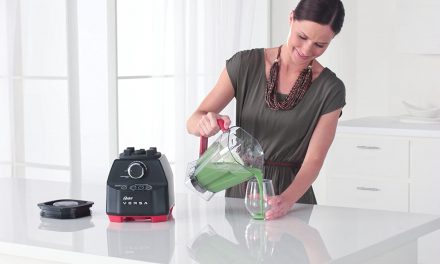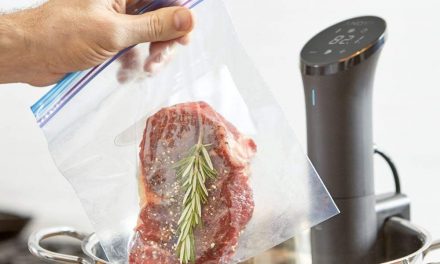A relatively recent entry onto the small appliance scene, air fryers have cornered the market on deep frying alternatives. Small, efficient, and claiming a variety of health benefits, air fryers enjoy a cult following among many home cooks.
But does the truth stack up to the claims? And what can an air fryer do that other, similar appliances can’t? In this article, we’ll answer these questions, dive into the different types of air fryers on the market, and take a look at a few models designed to meet a variety of needs.
First, what is an air fryer?
Table of Contents
How air fryers work
Air fryers aren’t deep fryers. While air fryers are marketed as alternatives to deep fryers, and they do produce similar, if distinct, results, they do not cook the same way. Basically, an air fryer is a small countertop appliance with an interactive display and a removable cooking tray, which sometimes also has a smaller cooking basket to hold food.
Some air fryers have additional functionality, and they do vary in size. But at their core, air fryers are small countertop convection ovens.
To understand air frying, you need to understand convection cooking
Unlike a traditional oven, where a heating element raises the temperature of the air, or a deep fryer, where a heating element raises the temperature of the oil, a convection cooker has two components: a heating element _and_ a fan. The air inside an air fryer is heated by the element while at the same time being circulated by the fan. This produces an effect called mechanical convection, which shortens cooking time and ensures more even cooking.
Food cooked in a convection oven is cooked about 25% faster than food cooked in a traditional oven, but the differences between cooking in a convection oven versus an air fryer are negligible—because air fryers are a kind of convection oven. Alongside air fryers, in-counter and countertop convection ovens use this same principle, as well as many modern brands of toaster oven.
Is air frying healthier than deep frying?
In truth, air frying isn’t frying at all. Air frying only requires a small amount of oil, enough to coat the food and keep it from sticking to the basket. This decreases the amount of fat in the final product. In fact, calorie counts in air fried food are 70-80% lower than in traditional deep-fat frying.
It is often claimed that air frying can reduce trans fat in foods compared to other cooking methods. While it’s true that air frying, in general, involves less fat than pan or deep frying, most common deep frying oils have little if any trans fats. Most of the trans fat in foods fried in vegetable oil come from the food itself, not the oil it’s cooked in. Air fryers do offer lower fat options for fried-like foods, but they’re not a foolproof way of avoiding trans fats.
The best way to avoid trans fats is to be aware of what’s in the food you’re eating, whether you cook it in an air fryer or not.
Types of air fryers
Air fryers are small, convection-type countertop appliances, but are all air fryers the same? And how do they compare to the traditional convection oven?
Simply put, there are two things an air fryer can do that no convection oven, countertop or otherwise, can manage—they’re fast, and they won’t heat up your kitchen. But what an air fryer is capable of cooking depends on the type of air fryer being used.
Basket-type air fryers
A basket-type air fryer is the simplest kind of air fryer. Either a perforated basket serves as the cooking surface or a solid basket is paired with a crisper plate. Hot air is circulated around and through the basket to cook the food. These air fryers are the best at air circulation and keeping food dry—which allows for the crispiest texture. The design also wicks away fat, providing the best low-calorie experience of any air fryer.
Unfortunately, to ensure all food is cooked evenly, a basket-type air fryer often requires stirring multiple types throughout cooking. In addition, both the basket and the tray or crisper plate must be cleaned after use. These kinds of air fryers work best with foods that come in—or can be made into—relatively large pieces, like french fries, chicken nuggets, and roasted vegetables.
For an air fryer that can handle more paste, batter, or stew-like textures, consider a paddle-type air fryer.
Pros
- Crisps food really well
- Reduces fat in the cooking process
Cons
- Requires more attention/stirring during cooking
- Works best with large-pieced foods
Paddle-type air fryers
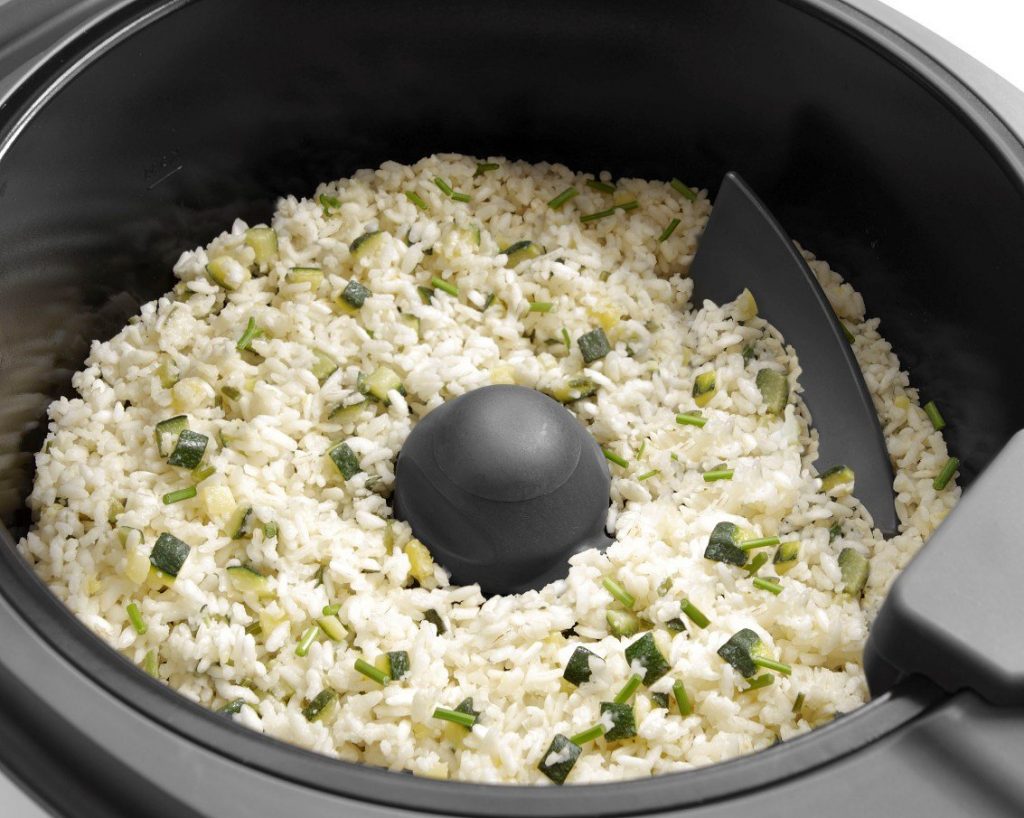
DeLonghi’s multicooker stirs rice with its paddle-type fryer.
A paddle-type air fryer, unlike its basket-type counterpart, eliminates the need for frequent stirring. Instead, an interior paddle stirs for you, ensuring even cooking. The paddle can also usually be removed, improving the versatility of the appliance. Another benefit of the paddle-type air fryer is the unperforated, more pot-like structure of the basket, which allows a wider range of foods to be cooked, including fried rice.
Paddle-type air fryers do, however, tend to be more expensive than basket-type models. And while they are generally easier to clean, the lack of drip tray means more fat stays in the food and crispiness is harder to achieve. This type of air fryer is much more similar in use to its technological ancestor—the countertop convection oven.
Pros
- No need to stir food
- Can cook wider range of foods
- Easier to clean
Cons
- More expensive
- More fat stays in foods
- Doesn’t crisp food as well
Countertop convection ovens
While not technically air fryers, countertop convection ovens work in the same way. Hot air circulates around food, heating and cooking it. Unlike air fryers, countertop convection ovens are larger, accommodate most oven-safe pans, and have more cooking options. However, since they are larger, they do take longer to heat up and may require preheating.
Some toaster ovens are also countertop convection ovens, but not all toaster ovens have fans. Double-check before you buy to make sure your countertop oven has a convection setting.
See Amazon’s bestselling countertop convection ovens.
Pros
- Larger
- More consistent browning
- Can use oven-safe pans in them
Cons
- Slower
- More fat stays in food without additional equipment
- Generates more heat in kitchen
The best air fryers in 2021
Since first arriving on the market in 2010 with the Philips Airfryer, air fryers have become trendy, healthy alternatives to deep fryers and smaller, faster alternatives to convection ovens. Today, dozens of companies make their own models, from small to large, simple to complex. Moreover, pressure cookers, toaster ovens, grills, steam baskets, slow cookers, dehydrators, and more have been combined with air fryers to give you even more ways to cook.
According to Consumer Reports, popular air fryers produce roughly the same quality of food, though some are a bit more effective at browning than others. The main differences between major brands, then, are usability, ease of cleaning, the loudness of the fans, basket capacity, price, and amenities.
Here are some of the top air fryers of 2021!
Philips Airfryers
From the makers of the original Airfryer come their modern offerings. Choose between a number of easy-to-use models with a variety of useful add-ons (sold separately). Philips Airfryers’ fans tend to be fairly loud, however, and the trays can be difficult to clean. These basket-type air fryers are also typically small, with capacities in the 2-4 qt. range.
Price range: $120-$340 on Amazon
Ninja air fryers
Ninja offers a wide variety of basket-type air fryers from the simple to the complex. Ninja specializes in multipurpose air fryers, though more basic models are available. Easy to use and easy to clean, Ninja air fryers range in capacity from 3-8 qts. And many models come with helpful add-ons. Though their fans can be loud.
Price range: $100-$280 on Amazon
Instant Vortex air fryers
Instant Vortex air fryers are made by the same company that manufactures the Instant Pot pressure cooker. These air fryers are often multipurpose, basket-type air fryers that come with a variety of settings, including broiling, dehydration, or even a rotisserie oven. These air fryers tend to be large (6-10 qts.), easy to use, and easy to clean, though they can be loud during cooking.
Price Range: $100-$180 on Amazon
T-Fal Actifry
If you’d prefer a paddle-type air fryer, try the T-fal Actifry Oil Less Air Fryer. It’s pricier than comparable basket-type models, but the convenience is unparalleled.
T-fal Actifry Oil Less Air Fryer Price: ~$150
The best air fryers for a family of four
One of the major downsides of many air fryers is their limited food capacity, making it difficult to cook for more than one or two people. However, many manufacturers have started selling larger capacity air fryers capable of handling much more food.
The highest rated large-capacity air fryers, according to Consumer Reports, are the NuWave Brio 6-Quart Air Fryer with its removable divider insert, and the GoWISE 5.8-Quart 8-in-1 Digital Fryer, which comes with eight cooking presets and a recipe book.
NuWave Brio Price: $150
GoWISE 8-in-1 Price: $90
Air frying accessories turn your machine into a multitasker
Expand your air frying options even more with accessories designed to fit perfectly in the machine. From pots and pans to wire racks and muffin tins, accessories take your air fryer to new heights.
Pay close attention when buying air fryer accessories, though. Not all accessories work with all air fryers.
Cooking with an air fryer
Cooking with an air fryer isn’t hard, but there are a few things you need to know to make the most of your new appliance:
- Choose the right recipe
- Some foods cook better in air fryers than others
- It’s best to stick with recipes and things you know will cook well when you’re getting started
- Prepare the ingredients
- Pat damp foods dry
- Make sure the pieces are fairly similar in size
- Don’t overfill the basket
- Food should be evenly distributed in a fairly thin layer to let convection work properly
- Don’t be afraid to work in batches if you’re cooking for larger groups
- Check the food often
- It’s important to check your food for doneness often until you know how long different kinds of foods take to cook
- Stir the food regularly
- If you don’t have a paddle-type air fryer, you will have to stir or flip the food to ensure even cooking
- If you do have a paddle-type air fryer, make sure the paddle is working as it should
With these tips in mind, you’re ready to start cooking!
Air frying for every appetite
From chicken nuggets to roasted vegetables to chocolate chip cookies, air fryers have something for everyone.

